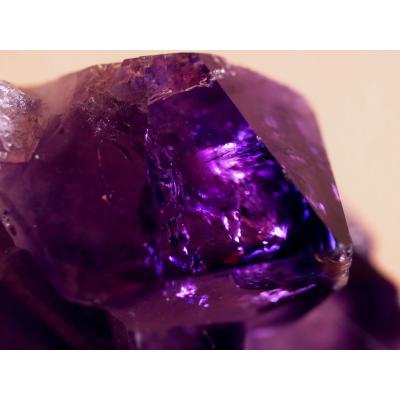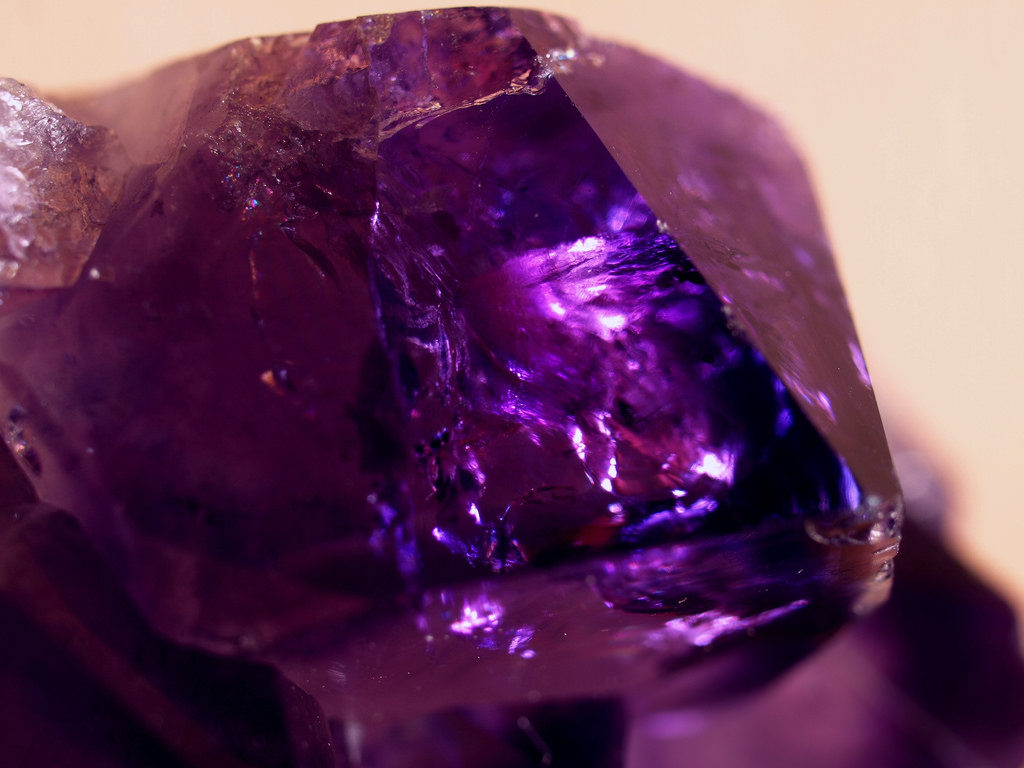
Posted in: Birthstones
 Raw Amethyst Crystal. Photo by Robert on Flickr.
Amethyst grows in shades of light lavender to deep purple. Chemically, it belongs to the quartz group, that is to say silicon dioxide. Quartz is the second most abundant mineral found in the earth's crust.
Raw Amethyst Crystal. Photo by Robert on Flickr.
Amethyst grows in shades of light lavender to deep purple. Chemically, it belongs to the quartz group, that is to say silicon dioxide. Quartz is the second most abundant mineral found in the earth's crust.
Amethyst Properties
In its purest form, quartz is completely colorless. Mineralogists call this form of quartz rock crystal. As in the case of other gemstone families, small inclusions of different elements can grow within the crystal structure. These inclusions, in particular, affect the coloring of the crystal. In the case of amethyst, a combination of iron and/or aluminum intrusion and irradiation (heat) create its violet hues. Iron in quartz crystal can also form citrine, amethyst's sister gemstone. The factor responsible for whether iron-infused quartz turns into amethyst or citrine is heat. Reduced exposure to irradiation results in violet coloration. If this purple quartz is heated to higher temperatures, it transforms in color to the golden yellows of citrine.History of Purple Quartz
Amethyst jewelry enters the human record sometime around 4,000 years ago. The Greeks and Romans carved amethysts into beautiful intaglios. Considered a protective stone and a stone of royals, these violet jewels belonged mostly to nobles and those of royal lineage. Despite its abundance on the earth, the purple stone remained scarce until sometime in the 1700s or 1800s. During that time, miners discovered a large deposit of purple quartz geodes in Minas Gerais, Brazil. It grows primarily in volcanic regions, forming as drusy in geodes or granite rock caves. Commercial grade amethyst comes to market from mines all over the world. The largest global producer is Zambia, Africa. The biggest opencast vein exists in Austria. It is also found in many regions of North America, in South Korea, and in Russia. In particular, the most valuable color is found in the Ekaterinburg District in Russia. "Deep Siberian" possesses the richest purple hues, saturated at around 75%-80%. The remaining 15%-20% radiates in blue and sometimes red, depending on the light source. Most deeply colored stones will command a higher price. We have a lovely selection of amethyst jewelry for you to choose from. To add a piece of earth's magnificent history to your collection, give our team a call today.5 years ago
1 view(s) 